Living and working in the Pacific Northwest, I am regularly confronted with dark, moist sites that exist under a dense canopy of trees — perfect conditions for a garden accented with ferns. There are few other plants that are able to flourish in difficult light and soil conditions and provide years of interest with minimal maintenance. Visually, they're extremely useful plants, with their fronds unfurling in the spring to reveal crisp new foliage that fills the gaps between hardscaping and plantings. In addition, a vast array of fern varieties is available, so you can devise a palette with rich contrasts in color and texture.
Here are some of my favorite ferns to add interest to shaded sites.
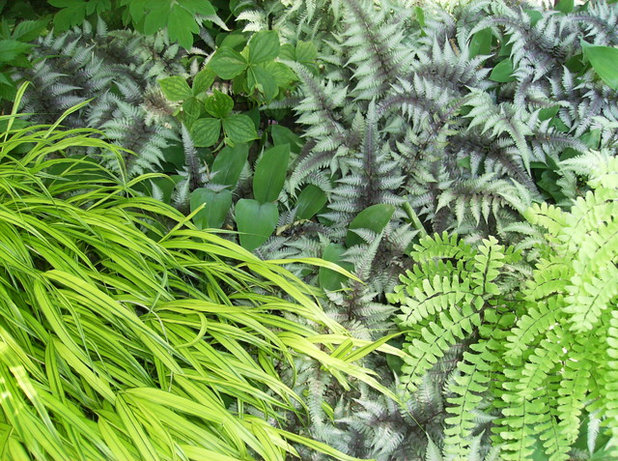
A J Miller Landscape Architecture PLLC
Japanese Painted Fern (
Athyrium niponicum ‘Pictum’)
Always an interesting feature in the shade bed, Japanese painted fern provides much-needed color to the dark corners of the garden. When you pair it with the bright foliage of Japanese forest grass (as shown here), the contrast in form and color draws the eye down to the ground and can accentuate paving stones. Its ease of growth and ability to flourish in a wide range of soil conditions make it a great addition to any garden.
USDA zones: 4 to 9 (find your zone)
Evergreen/herbaceous: Herbaceous
Soil requirement: Requires damp soil to flourish
Light requirement: Full to partial shade
Size: Slow growing to 12 to 18 inches
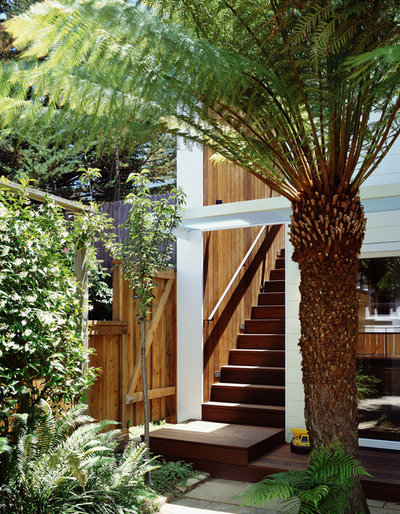
Cary Bernstein Architect
Soft Tree Fern (
Dicksonia antarctica)
A truly prehistoric-looking plant, soft tree fern's eye-catching form and imposing size make it a major feature in the garden. It works well in small, enclosed courtyard areas, where its canopy can filter light down to the space below. This siting has another benefit in colder climates (like where I live): It makes it easier to protect the plant from the winter cold.
USDA zones: 9 to 11, will grow in zone 8 with protection
Evergreen/herbaceous: Evergreen (may lose fronds in colder weather)
Soil requirement: Requires damp soil to flourish
Light requirement: Full to partial shade
Size: Slow growing to 15 feet tall
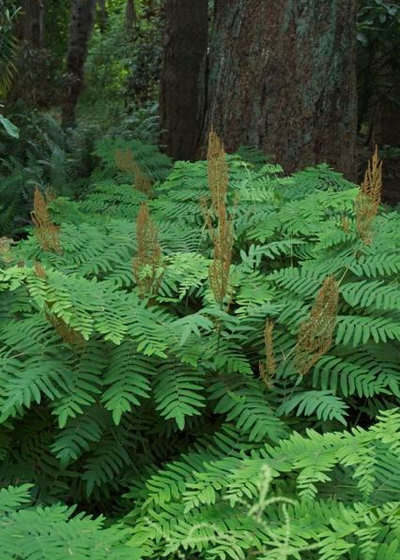
CYAN Horticulture
Royal Fern (
Osmunda regalis)
This large herbaceous fern is a dramatic addition. Its distinctive brown-tipped fertile fronds emerge through the mass of green foliage in spring, providing a focal point worthy of its name. In addition, royal fern's hardiness makes it well suited to harsher climates where other large ferns, like tree ferns, can't survive.
USDA zones: 3 to 10
Evergreen/herbaceous: Herbaceous
Soil requirement: Requires damp soil to flourish; prefers acidic
Light requirement: Does best in partial shade; will tolerate full sun with ample water
Size: 4 to 6 feet tall
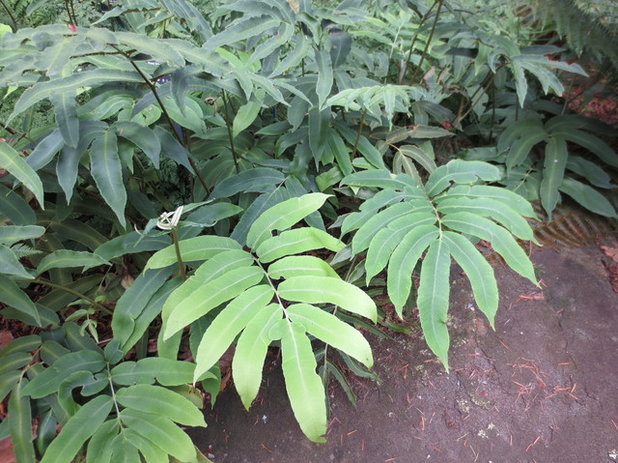
Matt Kilburn
Siebold Wood Fern (
Dryopteris sieboldii)
Siebold wood fern's leathery, pale green foliage is reminiscent of tropical plants, but those would not be at home in colder climates. Planted en masse, wood ferns are an exotic option for borders in woodland gardens, and they contrast well with shade grasses and other fine-leaved plants.
USDA zones: 6 to 10
Evergreen/herbaceous: Semievergreen
Soil requirement: Moist soil
Light requirement: Full to partial shade
Size: Slow growing to 18 to 24 inches
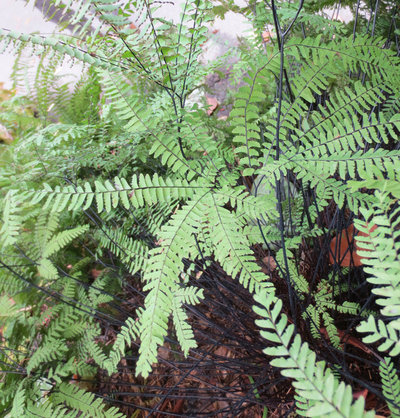
Matt Kilburn
Western Maidenhair Fern (
Adiantum aleuticum)
The lacy foliage of this distinctive fern adds a softness unequaled by any other shade plant. In the spring black stalks emerge from the ground and bright green foliage unfurls into broadly reaching hand-like fronds, a stunning display that gets more beautiful over the years as the plant matures.
USDA zones: 3 to 8
Evergreen/herbaceous: Herbaceous
Soil requirement: Moist, well-drained soil
Light requirement: Full to partial shade
Size: Slow growing to 2 feet tall
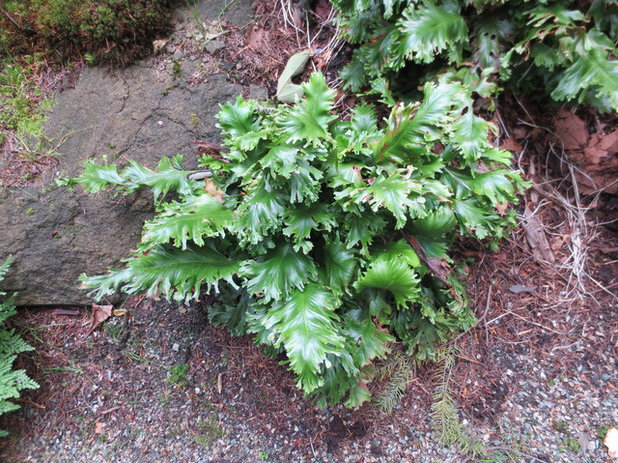
Matt Kilburn
Crispy Hart's Tongue Fern (
Asplenium scolopendrium 'Crispum')
Hart's tongue ferns are a welcome evergreen addition to the shade garden and differ greatly in appearance from most other types of fern. Their broad, leathery fronds can be either smooth or crinkly (as shown here) and are an excellent contrast to the feathery foliage of other ferns. Hart's tongue fern works well in modern and traditional plantings alike and is useful for providing structure among herbaceous perennials.
USDA zones: 5 to 9
Evergreen/herbaceous: Evergreen
Soil requirement: Moist, well-drained soil
Light requirement: Full to partial shade
Size: Slow growing to 18 to 24 inches





